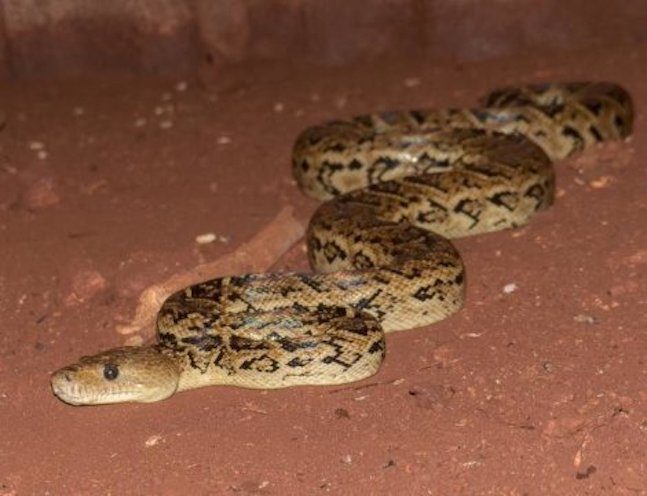
© Vladimir DinetsThe Cuban boa
Snakes have long been thought to be loners when it comes to securing a meal, but scientists from the University of Tennessee made a surprising discovery that might prove otherwise. In a new study of Cuban boas, researchers determined the snakes actually coordinate hunts together in order to capture more prey.
Very few of the world's 3,650 species of snakes had been observed in hunting in the wild prior to the study, according to lead researcher Vladimir Dinets, a research assistant professor of psychology at the university. But Dinets and his team traveled to Cuba to observe the eating habits of the country's largest native terrestrial predator in some of the nation's bat caves. Cuba's massive ancient caves, such as the Cuevas de Bellamar, have long been attractions for visitors.
A new study finds that although it's widely believed snakes seek out prey alone, some species actually coordinate hunts together.
For the Cuban boa, the caves are ideal spots to catch prey because of the many bat colonies found living inside them. The researchers found that instead of going on individual hunts for bats, the Cuban boas actually participate in attacks together. When the bats leave the cave at night and return at dawn, Dinets discovered that the boas gather at the entrance to the caves and hang from the ceilings — literally snatching the bats in their mouths as they fly in.
But what really struck Dinets in terms of the study was the way in which the boas would work together to secure their meals. The snakes would actually coordinate their positions in a way that when they'd hang down, they'd almost form a "wall" of sorts, ensuring a greater success rate for capturing bats and making it nearly impossible for the winged creatures to escape.The researchers observed that the more boas participating, the less time it took for each to find a meal. Conversely, when a boa attempted to catch a bat solo, the accomplishment was significantly more difficult.Though the finding is an exciting one for scientists, Dinets points to the fact that little is known about hunting rituals among snakes because just a handful of species have been observed by researchers.
"It is possible that coordinated hunting is not uncommon among snakes, but it will take a lot of very patient field research to find out," Dinets says in a
university press release.
As for the Cuban boa, seeking out the snake was no easy task for the researchers. The team says that the snakes are frequently poached by hunters in the country and are now only found in the most remote caves. Dinets warns that if the population dwindles, the boas won't be able to hunt together and thus could die off if capturing the bats becomes more difficult.
The study's
findings were published open-access in the journal
Animal Behavior and Cognition.

That's what's missing from the "research."
"But Dinets and his team traveled to Cuba to observe the eating habits of the country's largest native terrestrial predator in some of the nation's bat caves..."
" The snakes would actually coordinate their positions in a way that when they'd hang down, they'd almost form a "wall" of sorts ..."
Of course, they were hanging side-by-side; each snake would take up an empty space, as people do at a fishing dock.
Sheesh!
Perhaps the "researchers" breathed too deeply in the bat caves -- that's why they're batshit crazy!
(I just can't help it, folks.)